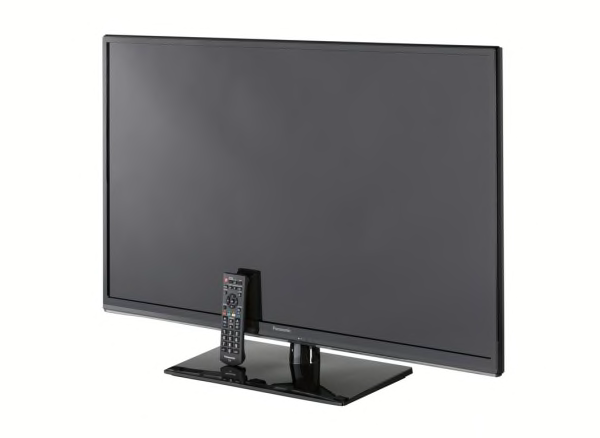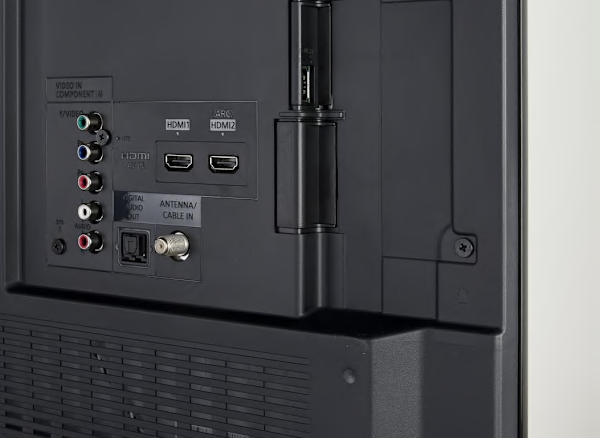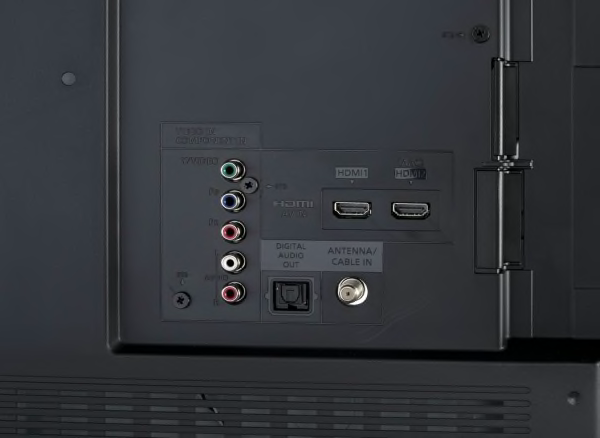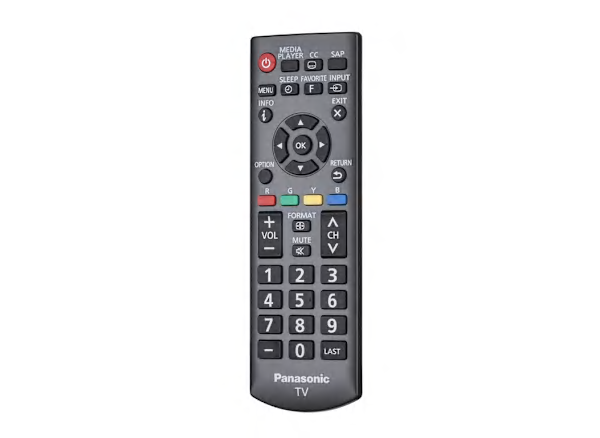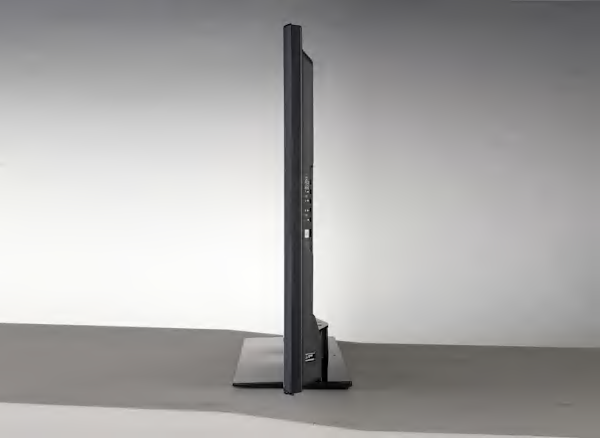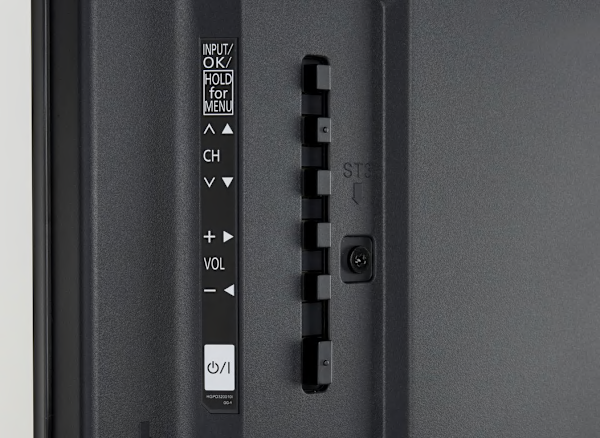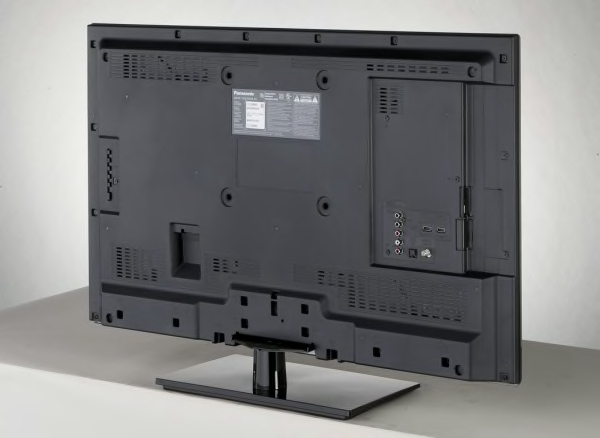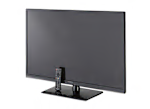PICTURE QUALITY This model had very good high-definition picture quality. It did a top-notch job displaying the finest detail. Color accuracy was acceptable, but below that of most sets. Contrast--the difference between the darkest blacks and brightest whites--was good, so images showed some depth and dimension. In this respect, the TV was similar to most of the models we test. The brightness level was good, making it a suitable choice for most rooms. In scenes with subtly shaded light-to-dark areas, such as a sky during sunset, the TV did a very good job producing a smooth transition without distinct, coarse bands. The deinterlacing and film mode operations were excellent on HD content; there was little or no trace of jaggies on the edges of objects for video and film-based 1080i content.
VIEWING ANGLE This Panasonic has a moderate viewing angle overall, decent, but not quite as good as the better-performing LCD sets we've tested. The optimal seating position for best picture quality is directly in front of the TV. If your family is seated in chairs off to the side of the TV, they'll see decent but compromised image quality.
When we moved off to the sides the horizontal viewing angle was fair; the picture showed a strong loss of color so flesh tones looked very washed out. Black levels brightened significantly, making dark scenes look hazy. Even when viewed from right in front of the screen, dark scenes were brighter at the sides due to the limited horizontal sweet spot. When viewing the image from above or below eye level to the screen, the vertical viewing angle was very good. The picture showed minimal change in color, contrast, and black level.
MOTION BLUR This Panasonic TV has only fair motion performance, with significant blurring on our motion tests While this model's Motion Picture Setting feature does moderately reduce motion blur, it also activates a smooth-motion effect that removes film judder (the slightly jerky motion visible during camera pans on film-based content), giving movies a video-like appearance that some may not prefer. We turned the feature off. On typical program content, the blurring effect is often fleeting and may not bother most people. However, keen-eyed viewers may detect the loss of texture and detail on scenes with movement, especially in high-quality video such as a Blu-ray movie.
SCREEN REFLECTIVITY Though not as mirror-like as on some LCDs, this screen surface is glossy and therefore susceptible to reflections from a nearby lamp or window. The screen is dark so it does a good job reducing glare from ambient light and maintains contrast even in a bright room.
SOUND QUALITY This TV's sound is good, fine for typical TV programming, but it won't reproduce the full range of movie soundtracks and music. It has a good volume range, though it is limited by slight cabinet resonance that's present even at lower volumes. At more typical listening volume levels the TV has only decent bass and impact, and sound is on the bright side. All told, none of these issues are overly distracting and most viewers will find this sound quality acceptable.
EASE OF USE Overall, we found the set easy to use. Setting up the TV for the first time was straightforward, as was access to features and controls you'll probably adjust only once. Ease of access to features you typically use more often was very good. Also, the remote is very good, and the on-screen menu is very easy to navigate.
INTERNET FEATURES This TV does not have access to the Internet.
CONNECTIONS This TV includes two HDMI inputs, one shared component/composite connection (which means you can only use one type or the other at a time), optical digital audio out, and one USB port. This TV has no type of wireless connectivity. HDMI and analog cable connections made to the rear-facing panel will protrude beyond the panel's slim depth.
INCLUDED IN THE BOX The TV comes with: a printed user manual, an electronic manual in the TV's menu, and a remote with batteries. ABOUT FIRMWARE VERSION: Our test results and picture settings are valid for the version of firmware indicated. If your TV's firmware differs from the one shown you either have an older or a newer version of firmware. Manufacturers may periodically upgrade the TV's firmware to enhance operation, fix bugs, or add features. Firmware upgrades may be downloadable directly to your TV via a wired or wireless network (if internet capable), USB port, or memory card, depending on your TV's capability. You can check your TV's firmware version, or upgrade to the latest firmware by pressing the menu button on your remote and navigating to the appropriate submenu, typically under settings. Consult the user manual or manufacturer's website if further guidance is needed.

















